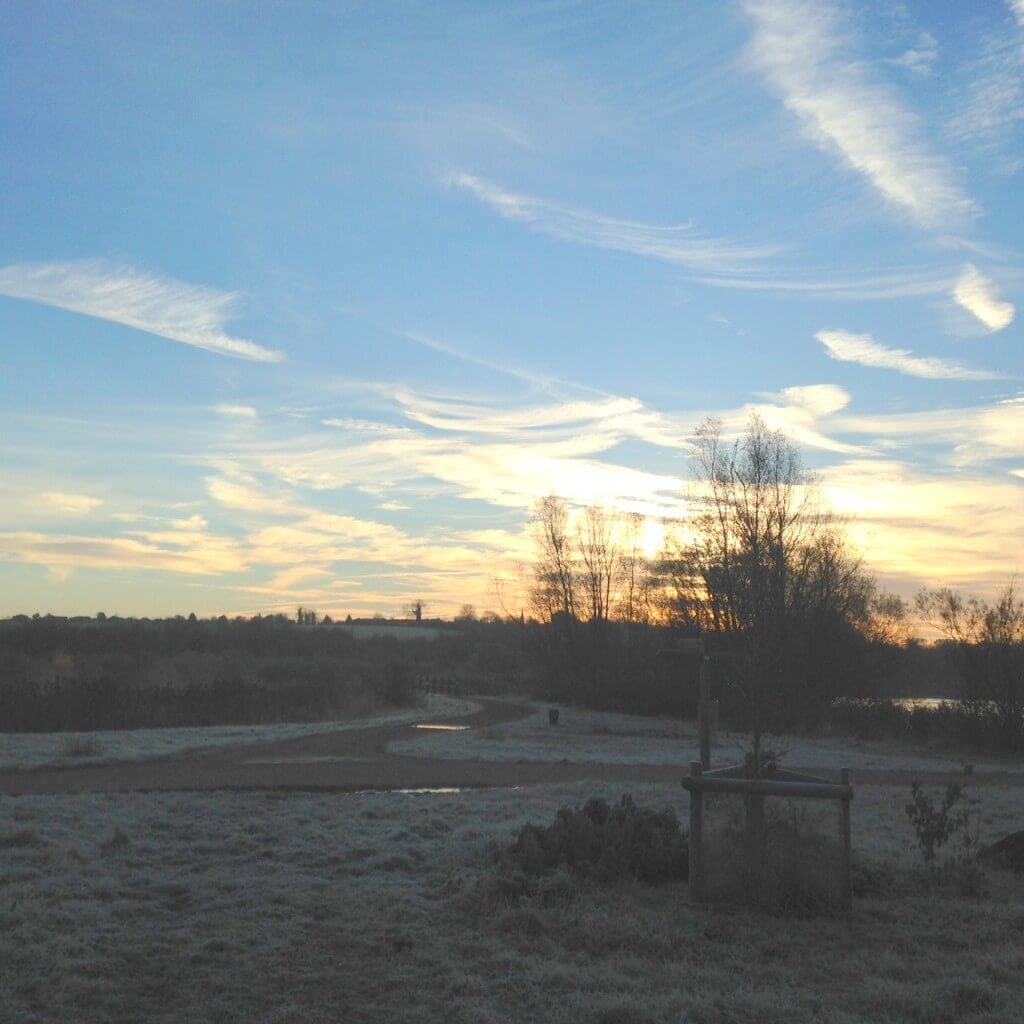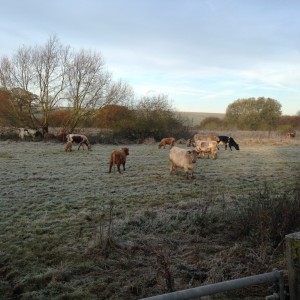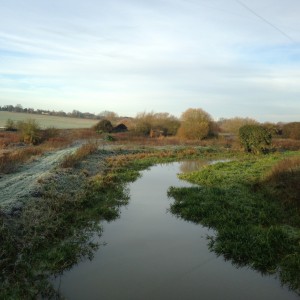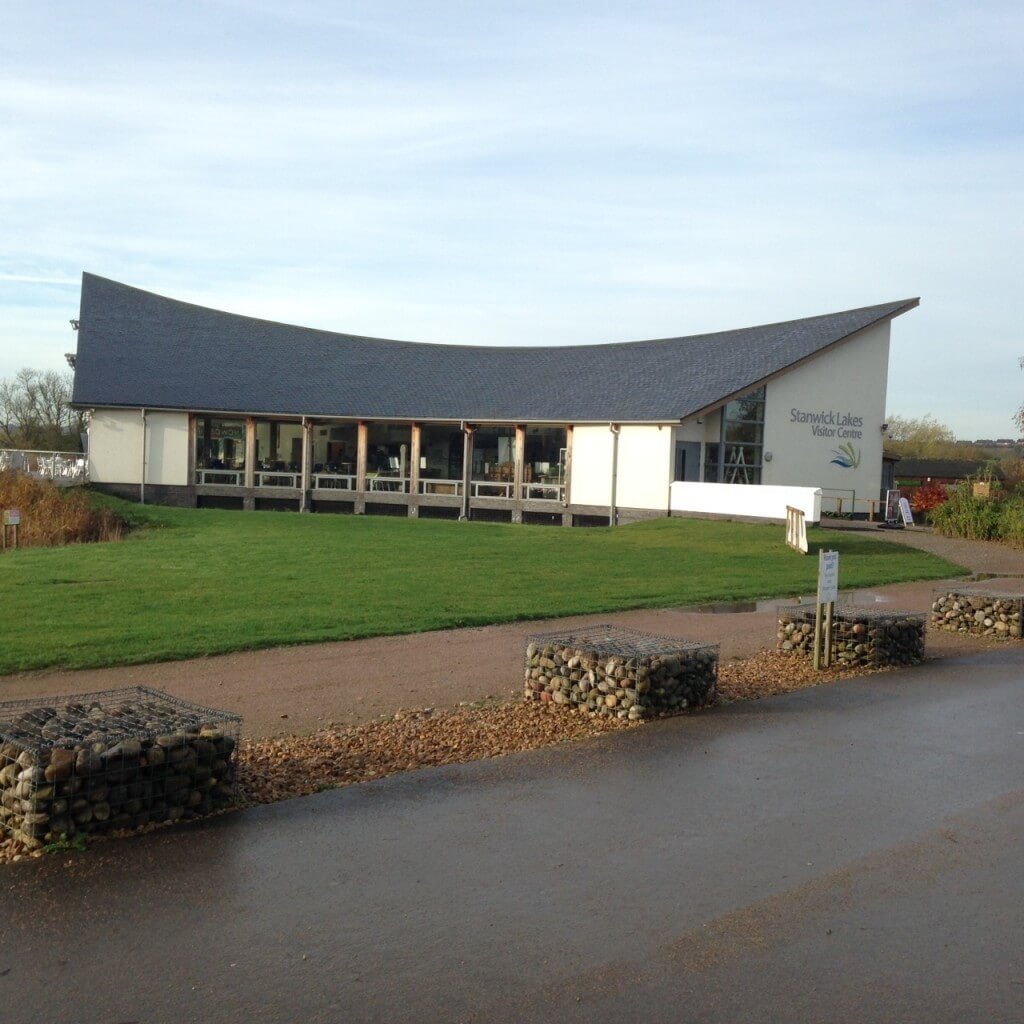
I’m regarding today as the first day of winter because there was a decent frost. You couldn’t call it a hard frost, more a soft frost, but a proper frost all the same.
When I parked at Stanwick Lakes a little after 0730 it was cold and frosty. It felt cold as I took off my warm shoes and put on my cold wellington boots, and I wished it were a little warmer as I entered records into Birdtrack on my phone (and that fewer key strokes were needed), but as I got walking I warmed up. And there was no wind so it was actually a very nice morning.
A few hundred Lapwings got up and I looked for Golden Plover, with no success, but also wondered if a raptor or mammalian predator had put them up. They just had that slightly panic-struck air about them. A party of Long-tailed Tits flew across the path and then all went silent as one emitted the long purring alarm call. I wondered whether that was for me, but it seemed a bit over the top, and looked up and saw a Peregrine flying over. A good start to the day!
But, assuming the Long-tailed tit alarm call was for the Peregrine, how often do Peregrines take LTTits? Never, or hardly ever? And yet it ‘alarmed’. That’s quite interesting. How good are small birds at raptor identification? Was this Peregrine mistaken for a Sparrowhawk or perhaps a Hobby? Or do Peregrines sometimes tear through the air to pluck a LTTit from a flock? I guess if delay increases the chance that your family of friends might be eaten then you may not spend to much time worrying over the finer points of raptor identification. Of course, if my identification is wrong, and it wasn’t a Peregrine at all (it was a Peregrine) then the mystery shallows rather than deepens.
There was a lot more water flowing down the river than I expected. It must have rained more here over the weekend than where I was.
On a small pool that rarely produces any very interesting birds (though all birds are interesting) the mist settled over the water and a single male Gadwall sat sideways to me on the still surface, seemingly wrapped in mist. What a smart duck is the Gadwall.
A fit woman jogger was catching me up on the path as I added Shoveler, Teal and Wigeon to the bird list. And then a very fit young man, who was definitely a runner, not a jogger, overtook her and gave me a cheery ‘It’s winter now’ as he ran past – he didn’t sound at all breathless. The frost was crunching below my wellington boots as I took each step.
No Cetti’s Warblers shouted out their songs from the usual places – maybe it was too cold for them.
An elderly walker of an elderly dog exchanged reamrks on the coldness, for we are English and therefore must talk about the weather. He said ‘I don’t mind it like this. Much better than rain’ and I nodded in agreement and added ‘Well, it is late November and we haven’t had any cold weather yet’.
A Water Rail squeeling from some reeds indicated that it was, indeed, winter but a Chiffchaff calling a bit further on was a less seasonal species to add to the ever-growing Birdtrack list, although Chiffchaffs are now regular here in winter.

There were some unfamiliar cows in a familiar field – they looked cold but I have no idea whether they were or not. The walk had warmed me up and I was enjoying the birds, the promise of sun, the cold air on my face and the sound of the traffic reminding me that this was Monday morning.
Further along the old railway line there were hundreds of Fieldfares feeding on berries. A few Redwings, the occasional Song Thrush, plenty of Blackbirds, but hundreds of Fieldfares. I saw lots of grey rumps flying away from me.
At the far end of my walk, on the Black Bridge, I stopped a while. the sun was out and the frost was melting fast and dropping from the metal railing on which I leant. The cold and some of the wetness found their way through my waterproof and onto my arms but the sun was just noticeably warm on my cheek.
There were some fish coming to the surface in the water below me. I wondered whether they were feeling warm or cold?

I took stock of my bird list; 50 species so far. Not bad. I guessed I would add a further five on the walk back. I already had four gulls but Common was a possibility; I had four thrushes too, but Mistle was a long-shot; Goldeneye was already in the bag (with the easier but sometimes missable Pochard) but Goosander might be another long shot. I had Peregrine, Sparrowhawk and Kestrel but a Buzzard and/or Red Kite were distinct possibilities. We’ll see – that’s what a walk like this is about. Seeing and looking and enjoying whatever nature throws at you.
Fifty-one was a Little Egret sitting in a tree (sulking because of the cold?). Fifty-two was a Red Kite. Fifty-three was a Skylark flying over and calling. Fifty-four was a Common Gull, or actually several of them. Fifty-five, hooray!, was a Goldcrest with another party of LTTits and then fifty-six was a singing Cetti’s Warbler who must have warmed up now it was after 10 o’clock.
If it hadn’t been a Monday, usually, and today, a fasting day for me on the 5:2 diet, then a cup of coffee and a bacon roll would have been very welcome. Instead I changed from my, now warm, wellington boots into my, now cold, shoes and headed home. The frost had just about gone from the morning of the first day of winter.

Home of an excellent bacon sandwich – but not for me today.
[registration_form]
Lovely piece, and so I’m not surprised that in the time I took to read it 5 people liked it. Looking forward to the two books when they appear!
I must have arrived at Stanwick a couple of hours after Mark left today, and as a result my Birdtrack list was much shorter – a paltry 39 as opposed to 56 – must get up earlier! However, I did have the delights of a big starling flock swirling in front of the setting sun – about 700 I reckoned. Suddenly the disperse flock drew really close together. There was the culprit – a Sparrowhawk having a look before, intimidated by sheer numbers, it went off north – perhaps to look for Mark’s Long-tailed Tits?
I’d been there about 2 hours before I saw any winter thrushes – Mark’s “hundreds of Fieldfares” must have moved on during the day – I only saw 8 flying SW along the river. There were 2 Cetti’s Warblers singing, but the Chiffchaff and Water Rail had gone silent during the afternoon (although a chap I met had heard a shrieking pig.) Like Mark I was surprised that there were no Golden Plovers, but the Lapwing flocks were still a delight. But bird of the day (or rather the afternoon) was a superb male Goldeneye right in front of one of the hides, its head iridescent green and its eye – well- golden!
Stanwick Lakes is one of the jewels in the Northants birding crown, but it was looking especially lovely this afternoon. I was there to suss out the possibility of running some informal practice sessions for new Breeding Bird Surveyors next spring – the reserve staff were very helpful and the cafe is great… have you tried their Cornish Pasties, Mark? Just the job for the first day of winter.
Barry – many thanks. It would have been nice to run into you. See you at Swanwick?
Ed Drewitt’s work on urban peregrines has revealed a fascinating range of prey species (although doesn’t appear to include LTTs). Well worth a read: http://www.eddrewitt.co.uk/#!peregrines/c1vw1
Monday is my only eat 500 calories day too. And I did not have 50 odd birds to distract me. But I did have a Small Tortoiseshell woken up by the warm sunshine and flapping at the lounge window. I caught it and placed it in a cool spider free outbuilding to overwinter successfully. It was a timely reminder that we are approaching the time of year when unused rooms get heated up for Christmas guests and so disturb hibernating butterflies. The kind thing to do is relocate them to a suitable place that will remain cool but will have an exit next Spring.
Good luck with 5.2 Mark
Lynn – thank you for that reminder and welcome to this blog.
Cattle do not look cold to me,a old stockman once told me as long as a cow has a full belly and probably a sizeable calf inside it(a cow can have something like 50 Kilos in its rumen)then it can stand quite low temperatures.
Dennis – I’m sure you are right. they were just standing there and looking at me – that made them look cold and miserable!
Super morning well spent Mark. I also had a rare dawn wander at a lovely spot called St Aidans (Leeds) and saw a pretty similar selection of great birds (although my ID skills would leave me lagging way behind you on the total count). I too enjoyed seeing the Gadwall, and the Teals and Shoveller (well, the males anyway). Also Redshank, Lapwing, and a lonely Little Grebe. The Water Rails squealed from the Reeds, a little flock of LTT, plenty of Stonechat and Reed Buntings but I can only recall a list of 20…must try harder. Oh and 5 Red Kites on my journey. Sounds like T’midlands aren’t too different from T’north.
Tim B – ah, St Aidans. I knew it when it was just a lad.
I bet you saw a lot more than 20 species but you need to write them down as you see them – or use the excellent (-ish) Birdtrack app on your phone. You probably saw Carrion Crow, Magpie, Wood Pigeon, Blackbird, a finch or two, Starling, Canada Goose etc etc Just guessing here. Keeping a list can become addictive – I’m addicted.
Thanks Mark, I’ve downloaded the app for next time and I’ve recounted with the help of some books and snapshots (that’s why I take the camera) to about 34ish (Not including the Gulls as they all look the smae to me;-)
Tim – well done! You’ll sort it out no problem!
The gulls are worth spending some time on. Start with just the adults and ignore all the brown ones. There are, basically just these five types (to simplify): very big ones with black backs, medium sized ones with black backs, medium sized ones with grey backs, small ones (sometimes with black heads ) and ‘in between medium and small’ ones with grey backs.
That’s a super report Mark. I’ve been down the old railway line — on a train. There weren’t any peregrines ( or red kites) then. Seem to be good numbers of winter thrushes – more than I got doing the winter thrushes survey during the previous two winters.
Trevor – thank you.
Looks like a good trip Mark. I found a Black Redstart in Oundle a couple of weeks ago, and there’s plenty of Chetti’s calling along the river at the moment down here.